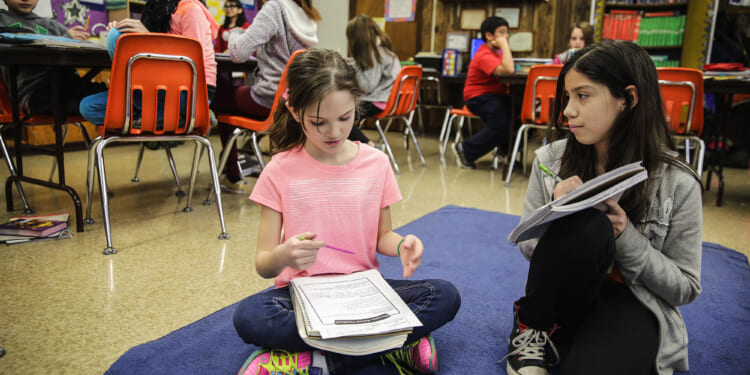Illinois students could be denied donor-funded scholarships for tutoring and other academic services because opponents are spreading misinformation about how the program works. Here are the facts about four of their fictions.
Students in Illinois and across the country could soon benefit from scholarship funds to help them find a tutor, attend a different school, get special lessons or help with curriculum.
But Illinois leaders must say “yes” to the Federal Scholarship Tax Credit program, established by the Educational Choice for Children Act, and “no” to the false arguments manufactured by teachers unions opposing any school choice other than what they want to offer.
Here’s what you need to know about how the program really works.
Myth No. 1: The scholarships take money away from public schools.
Reality: The program takes no state or federal money from public schools because it is funded by private donors.
The federal scholarship tax credit program will not divert federal money or state money from public schools to fund the scholarships.
Instead, the scholarships are funded by private individuals. Those donors will then get a federal tax credit for donating up to $1,700 each year. Any taxpayer can receive this dollar-for-dollar federal tax credit by making a qualified contribution to a scholarship granting organization, which is a tax-exempt organization doing the legwork of providing scholarships to students.
That means the only “cost” to the federal government is foregone income tax revenue. There is no cost to states.
Myth No. 2: The scholarships only help private school students.
Reality: Public school students can get money to pay for tutoring or other academic enrichment.
The program isn’t only for students wanting to attend private schools. It benefits public school students, too.
Starting in 2027, the scholarship funds can be used by students in public or private schools for educational services such as tutoring, additional educational classes, books or online educational materials, fees for standardized or college admissions exams and fees for dual enrollment programs that allow high school students to earn college credit.
This means public school students who may be struggling in certain academic areas or needing extra help or materials won’t have to leave their local public schools to find the support or opportunities they need.
Myth No. 3: Rejecting the program would be rejecting a tax break for the rich.
Reality: The federal tax credit is capped at just $1,700 each year and the credit can be claimed by Illinois donors, even if the state doesn’t opt in.
The $1,700 federal tax credit is geared toward middle-class donors who want to make a difference in the lives of students. It is not a corporate tax break. It is not large enough to make much difference to a wealthy person’s tax bill.
What’s more, Illinois doesn’t have to opt into the program for a taxpayer to benefit. A donor in Chicago or Carbondale could contribute to a scholarship granting organization in another state and still claim the tax credit.
But then those donor dollars would not benefit Illinois students. Illinois leaders must join the program or Illinois students will fail to benefit.
It’s not a good look for teachers unions or other opponents of the program. They would be blocking aid to Illinois children while money flows to children in other states.
Myth No. 4: The scholarships will mostly benefit high-income families.
Reality: The scholarships will level the playing field to give low-income families access to the educational offerings high-income families can already afford.
Students would be eligible for the scholarships if their family income is within 300% of the area median income. That means every low-income family in Illinois would be eligible for the funds and could access educational supports they couldn’t otherwise afford.
The American Enterprise Institute’s Ian Rowe and Democrats for Education Reform’s Jorge Elorza point to research showing, “high-income families spend five times more than low-income families on out-of-school enrichment activities, such as tutoring.”
But the federal scholarship program provides an avenue for low-income families to access “educational supports typically reserved for the privileged few,” according to Rowe and Jorge.
Illinois students need an educational boost. Denying them this help because special interests are spreading falsehoods would be wrong and cruel.










